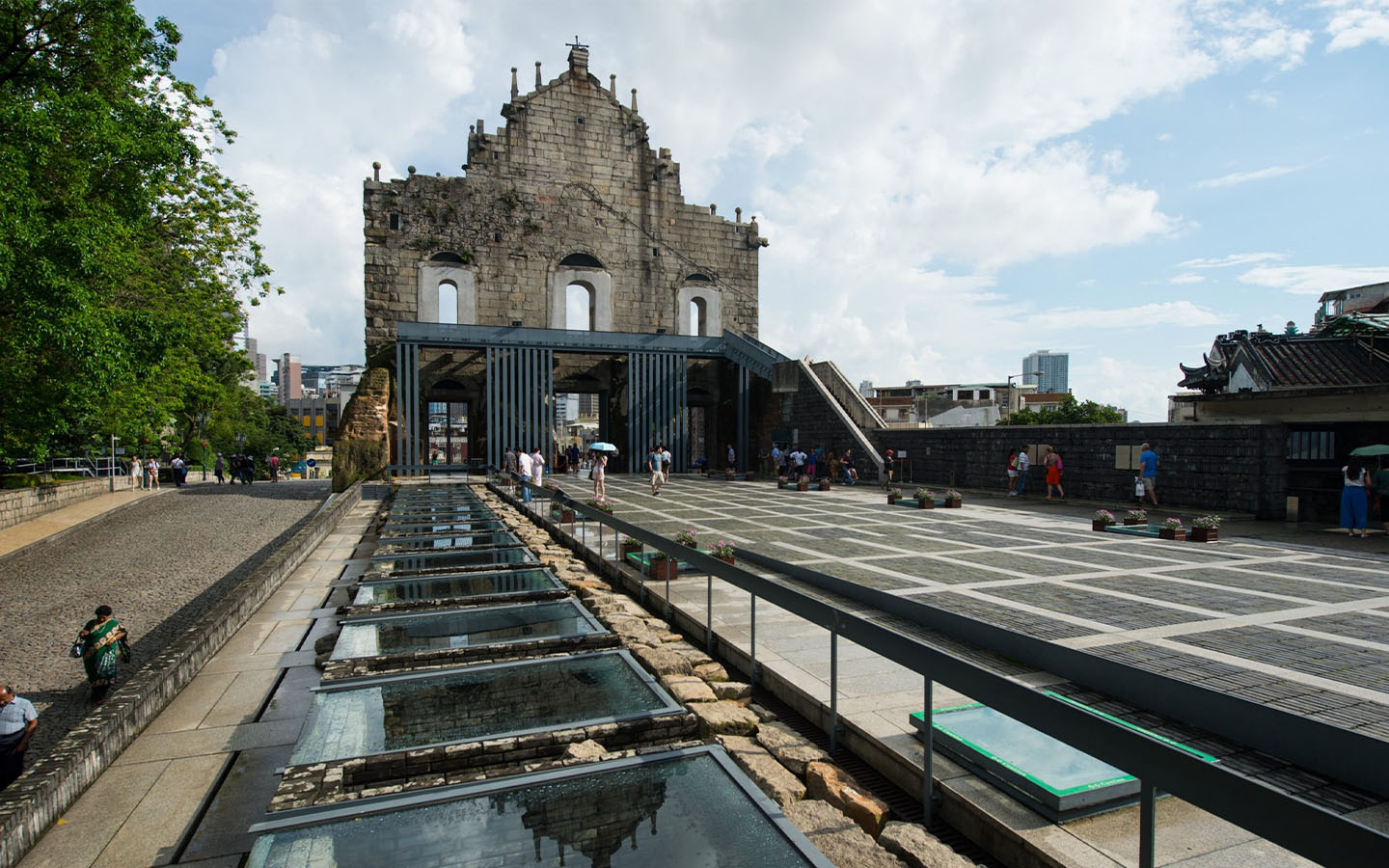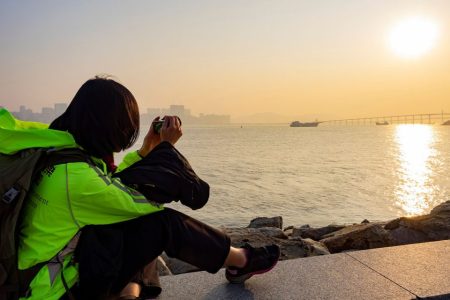Macao’s iconic landmark, the Ruins of St Paul’s, reopened today after a structural inspection was conducted in response to the heavy rainfall and a small rock that was found in front of the site yesterday.
According to a statement by the Cultural Affairs Bureau – also known by its Portuguese initials IC – the heavy rainfall yesterday afternoon triggered a power cut in the interior spaces at the site. IC officials also found a rock on the steps in front of the ruins, which was initially suspected to have fallen from the landmark. (No injuries were reported.)
In response to the hazards, IC closed the landmark off to the public and dispatched officials to conduct an inspection using a drone, which confirmed that the rock did not come from the top of the ruins, leaving a gap, as was rumoured on the internet. The bureau stated that the gap had already existed before the incident.
The site was deemed safe for reopening after an inspection was conducted on the main structure and electrical system.
[See more: From the archives: The man who made St Paul’s and the secrets behind the ruins that few tourists know]
IC chief Leong Wai Man spoke to local media on the sidelines of yesterday’s Legislative Assembly meeting and said that “we will follow up on the spot where the rock fell and the reason.” She stated that the bureau would use data from the Macau World Heritage Monitoring Centre to see if there were any irregularities and more information would be published in due course.
In its statement, IC pointed out that it would continue to monitor the structure of the ruins, conduct scheduled maintenance work on the landmark, as well as study measures to protect the site during poor weather events.
Arguably the city’s most well-known attraction, the site was originally home to a 17th-century church and university before a fire in 1835 destroyed much of its wooden structure, with the exception of its stone facade. Steps have been taken to protect the UNESCO World Heritage Site in recent times, including the installation of steel bars on the back to fortify the structure.






